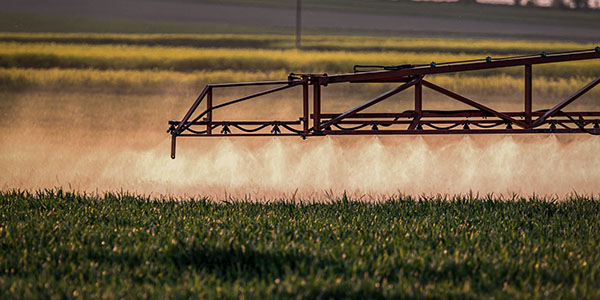AGRONOMICSUPPORT
YOU CAN TAKETO THE FIELD
12
Nov
2019
Success Means Weed Control
Farmers are innovators, and when challenges come about, they are excellent at taking that challenge and learning from it.
This year, many areas in the corn belt faced heavy rain this year and crops were either unable to get planted or were put in late. In either situation, it was common to see fields that were overgrown with heavy weed pressure. Several of the fields that never got planted remained overgrown with weeds almost the entire season because it simply never dried up to get either a sprayer or tillage equipment in the fields.
These challenges are great learning opportunities for everyone. The heavy weed pressure is not always a case of bad weed management, but is a demonstration of just how long certain species of weed seeds can stay viable in the soil. These years also display how having one weed escape a herbicide application can impact the seed stock in the soil.
Several different species of weeds showed up in a strong way this year. Marestail, Waterhemp, and Kochia are just a couple of examples of species where each plant can produce hundreds of thousands of seeds each year. Most of these seeds are only viable in the soil for 4-5 years, but even so, that many seeds, if not managed correctly, can become a real problem like we saw this year.
Other species such as Mustards, Canada Thistle, Common Lambsquarters and Field Bindweeds can maintain viable seed in the soil for decades (Colquhoun, 2003). After witnessing a year when field after field is full of weeds, the importance of pre-emerge herbicides, and in-season applications with residual effect is amplified.
Maintaining a good weed management program is critical to stay ahead of the issues that could arise from weed overgrowth. Utilization of a preemergence herbicide, alongside a mixture of different Mode of Action (MOA) burn-down herbicides early in the growing season is a good way to get a head start on your weed control. Mid-season and late-season herbicide passes should include multiple herbicides containing different Modes-of-Action (MOA) and have residual effects in the soil.
In conclusion, each year brings around its own challenges and adversity, but challenging years often provide the greatest opportunities to learn. Let’s make the most of the opportunities we were given to learn from this year, and let’s get a plan in place for next year. Contact your local LG Seeds Sales Account Manager, or Technical Team Agronomist and get started on an exciting new growing season next year!
Sources and additional information:
Colquhoun, J (2003, February). How long Do Weed Seeds Survive in the Soil. https://extension.oregonstate.edu/news/how-long-do-weed-seeds-survive-soil
Download a copy of this technical bulletin: Tech_483 - Success Means Weed Control
This year, many areas in the corn belt faced heavy rain this year and crops were either unable to get planted or were put in late. In either situation, it was common to see fields that were overgrown with heavy weed pressure. Several of the fields that never got planted remained overgrown with weeds almost the entire season because it simply never dried up to get either a sprayer or tillage equipment in the fields.
These challenges are great learning opportunities for everyone. The heavy weed pressure is not always a case of bad weed management, but is a demonstration of just how long certain species of weed seeds can stay viable in the soil. These years also display how having one weed escape a herbicide application can impact the seed stock in the soil.
Several different species of weeds showed up in a strong way this year. Marestail, Waterhemp, and Kochia are just a couple of examples of species where each plant can produce hundreds of thousands of seeds each year. Most of these seeds are only viable in the soil for 4-5 years, but even so, that many seeds, if not managed correctly, can become a real problem like we saw this year.
Other species such as Mustards, Canada Thistle, Common Lambsquarters and Field Bindweeds can maintain viable seed in the soil for decades (Colquhoun, 2003). After witnessing a year when field after field is full of weeds, the importance of pre-emerge herbicides, and in-season applications with residual effect is amplified.
Maintaining a good weed management program is critical to stay ahead of the issues that could arise from weed overgrowth. Utilization of a preemergence herbicide, alongside a mixture of different Mode of Action (MOA) burn-down herbicides early in the growing season is a good way to get a head start on your weed control. Mid-season and late-season herbicide passes should include multiple herbicides containing different Modes-of-Action (MOA) and have residual effects in the soil.
In conclusion, each year brings around its own challenges and adversity, but challenging years often provide the greatest opportunities to learn. Let’s make the most of the opportunities we were given to learn from this year, and let’s get a plan in place for next year. Contact your local LG Seeds Sales Account Manager, or Technical Team Agronomist and get started on an exciting new growing season next year!
Sources and additional information:
Colquhoun, J (2003, February). How long Do Weed Seeds Survive in the Soil. https://extension.oregonstate.edu/news/how-long-do-weed-seeds-survive-soil
Download a copy of this technical bulletin: Tech_483 - Success Means Weed Control






Technical Team Agronomist